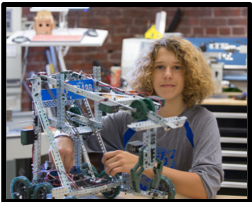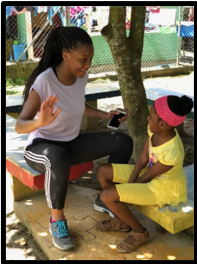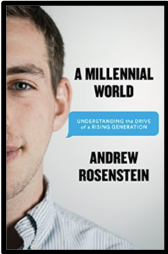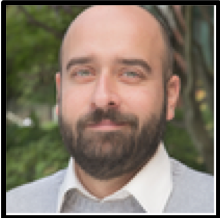Making Education Special
When I think back on my early days in school, I remember lining up, sitting by alphabetical order, and taking standardized tests that determined the class I would land in the following year. That model of school really separated the winners and losers at an early age and did so with minimal metrics for determining actual potential. If you could perform within a narrowly acceptable band, then you were a winner. And winners had access. If you could not, well, you were relegated to a group who had ever-diminishing access to tools and enrichment.
 Fortunately, the landscape has changed and I think we owe it to our children to push even harder to undo school as it once was. We owe it to them to makes schools less about standardization and more about unleashing individualized potential and fostering inner talents. In fact, we owe it to our teachers to undo that model so as to help them unleash their own inner genius and thus inspire and grow alongside our students. That hopefully is the future of school.
Fortunately, the landscape has changed and I think we owe it to our children to push even harder to undo school as it once was. We owe it to them to makes schools less about standardization and more about unleashing individualized potential and fostering inner talents. In fact, we owe it to our teachers to undo that model so as to help them unleash their own inner genius and thus inspire and grow alongside our students. That hopefully is the future of school.
14 years ago, we opened AIM Academy in Philadelphia with the goal of upsetting the paradigm specifically for bright children with diagnosed learning differences. Our mission was exciting and a team of educators who were looking to do school differently too found their way to AIM. I was lucky to be among them. Since then, we have grown exponentially and our students have found incredible successes as a result. In the old model, our students would have been separated out and their access limited. At AIM, we undo that and help students discover that in the new model, their differences are assets because they see the world through a unique lens.
Unlike prototypical special education, we do not start with what a child cannot do. We start with what a child loves to do. We know that we will fill their day with interventions and they will have to learn to read, write, and do math. We know that as a result of their learning difference, they will have to work twice as hard as their age-related peer. But, we don’t make them give up what they love to make room for what they need. In fact, we see doing what they love as an integral piece of how they acquire they need. And we have the results to show that doubling down on a passion will equal double the success for our students.
Consider a student with dyslexia and ADHD who was denied by a host of local elite independent schools, but six years later was accepted to Babson University’s Entrepreneurship Program. Or another who floundered in middle school at a prestigious independent school until they encouraged her to leave and she found her way to AIM. As decision day approached, the schools on her list engaged in a scholarship war and repeatedly increased their offers to one up each other in an effort to convince her to attend. Yet another who suffered from the low expectations that plagues special education. If he performed well enough, there was no reason to push harder. The goal was to be average even though he had an aptitude that placed him in the top tenth percentile. Now he is a successful Junior in a top Engineering Program at WPI. And another still who was a non-reader until she came to AIM. Here, she found her passion and voice, and the accommodations that would help her find success in a renowned Global Scholars program at the University of Delaware. They all went from main stream mediocrity or failure to success stories because of a program that stopped thinking about how children fit into schools and started thinking about how schools can fit around them instead.
 In 2012, as we prepared to graduate our first class, we began incubating a program called the Four Threads to the Future. At that time, we asked ourselves, what kind of program can we build that will ensure that our students’ time in school was spent in pursuit of a passion instead of the same old thing. What would a framework for a program like that include? After some research, we distilled a set of Four Threads – lanes within which we believed the future was heading. We then looked to the professional world and Universities for guidance. What were top firms and university programs looking for in ideal applicants? What experiences did they want children to have and what experiences or courses did not mean much? Did APs matter? How about standardized tests? How important was it to have a portfolio that showcased collaborative skills, creativity, critical thinking, and strong communication skills? We landed on a framework, that gives students the opportunity to draw connections between classroom, content, personal interests, electives, shadow days, summer programs, summer reading, internships, and eventually the academic or professional paths they will pursue after graduation. This makes for a completely individualized program that is about the strengths of a child with a learning difference, not about their deficits.
In 2012, as we prepared to graduate our first class, we began incubating a program called the Four Threads to the Future. At that time, we asked ourselves, what kind of program can we build that will ensure that our students’ time in school was spent in pursuit of a passion instead of the same old thing. What would a framework for a program like that include? After some research, we distilled a set of Four Threads – lanes within which we believed the future was heading. We then looked to the professional world and Universities for guidance. What were top firms and university programs looking for in ideal applicants? What experiences did they want children to have and what experiences or courses did not mean much? Did APs matter? How about standardized tests? How important was it to have a portfolio that showcased collaborative skills, creativity, critical thinking, and strong communication skills? We landed on a framework, that gives students the opportunity to draw connections between classroom, content, personal interests, electives, shadow days, summer programs, summer reading, internships, and eventually the academic or professional paths they will pursue after graduation. This makes for a completely individualized program that is about the strengths of a child with a learning difference, not about their deficits.
Student artists and designers delve into the visual and performing arts by taking courses that include 2D Studio Arts, 3D Sculpture, Drama, Music Theory, Vocal, Instrumental, Video, Choir or Photography. They craft an extensive portfolio showcasing a variety of mediums or performance skills. They have opportunities to contribute work to local galleries, participate in productions from Shakespeare to the Fringe Festival. They intern at theaters and produce entire shows. They spend summers at NYU and Berklee and dually enroll at the University of Arts.
Young entrepreneurs develop critical thinking and problem-solving skills through the incubation of a start-up. In a workshop setting, they gain feedback from peers and have access to entrepreneurial leaders and experts from a variety of professions around the city. They learn about capital management, cash-flow, ethics, advertising, marketing, strategic and model thinking, as well as key decision-making skills. They have access to countless internship opportunities and actually speak at conferences around the country.
 AIM’s Center for Global Leadership provides a space for students to understand the world in their place and it. Here, they learn about their impact on a global scale, travel widely, and may even be designated as one of the school’s global scholars – a coveted title. They work with nonprofits and focus their studies on issues of equity, poverty, education, and healthcare. They learn languages and connect internationally with partner organizations in the Philadelphia’s regions first and only Global Portal right here at AIM Academy.
AIM’s Center for Global Leadership provides a space for students to understand the world in their place and it. Here, they learn about their impact on a global scale, travel widely, and may even be designated as one of the school’s global scholars – a coveted title. They work with nonprofits and focus their studies on issues of equity, poverty, education, and healthcare. They learn languages and connect internationally with partner organizations in the Philadelphia’s regions first and only Global Portal right here at AIM Academy.
 Students in Science & Engineering Thread fill their schedule with advanced science and math courses while learning core critical thinking and problem-solving strategies in the Maker Space and Robotics Lab. They learn sophisticated design software like Autocad and Maya and use advanced tools like 3D printers, Laser cutters, and C&C routers. They bring home trophies from robotics competitions and showcase the content they have mastered in the school’s annual B.A.S.H. – a massive school-wide festival of student work.
Students in Science & Engineering Thread fill their schedule with advanced science and math courses while learning core critical thinking and problem-solving strategies in the Maker Space and Robotics Lab. They learn sophisticated design software like Autocad and Maya and use advanced tools like 3D printers, Laser cutters, and C&C routers. They bring home trophies from robotics competitions and showcase the content they have mastered in the school’s annual B.A.S.H. – a massive school-wide festival of student work.
It may sound difficult to do all this in a grade 1 – 12 school serving just under 400 students, but it is easy when your mission dictates that school should be exceptional for children. The reality is students with language-based learning differences are amazing when they can be understood and embraced by a system that can see their value. If we want to truly rethink education and transcend that old model, we need to let go of the wheel a little and have the children do some driving. We need to think about students first and systems second and from there the individual gifts of every child can be unleashed and school can truly be special.
ABOUT THE AUTHOR
 Christopher F. Herman is Head of School at AIM Academy in Philadelphia where he has been for 14 years. There, he remains devoted to bringing school to life for children with learning differences every day. He is an alumnus of the University of Pennsylvania’s Graduate School of Education and Long Island University. He is an adjunct professor of Education at St. Joseph’s University.
Christopher F. Herman is Head of School at AIM Academy in Philadelphia where he has been for 14 years. There, he remains devoted to bringing school to life for children with learning differences every day. He is an alumnus of the University of Pennsylvania’s Graduate School of Education and Long Island University. He is an adjunct professor of Education at St. Joseph’s University.
